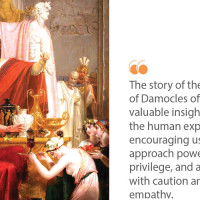- Friday, 10 October 2025
Stargazing Highlights Of September
The night skies of this autumn month would invite ardent observers to marvel at the peculiar planets, secretive stars and confounding constellations and embrace the elusive conundrums of the enigmatic entities of the heavens. Planets Mercury and Mars would not be perceivable this month. They would be marching merrily through constellations Leo (lion) and Virgo (maiden). Star Regulus (little king) in Leo is actually a queer quadruple star comprising four stars that are organised into two pairs. The system is approximately 79 light-years from us. Regulus and five dimmer stars have collectively been tagged as the sickle asterism that marks the head of Leo. Denebola (Uttar Falguni) is a sparkling star in Leo. It is barely 36 light-years away. The delectable star Delta Leonis, alias Zosma or Purva Falguni, is simply 59 light-years away. Planet Venus can be glimpsed in the eastern sky before dawn.
It would be venturing through the cute constellations Cancer (crab) and Leo. Mighty planet Jupiter and its mesmerising 97 moons can be relished from late in the night in the eastern sky till daybreak. It gleams gloriously among the starry constellation Gemini (twins). The romantic ringed planet Saturn and planet Neptune (as a lambent pinprick) would be glanced in the eastern sky after twilight.
They would be aloft in the southern sky by midnight and dip down towards the western horizon by sunrise. They shimmer below the charismatic circlet asterism belonging to the rambling constellation Pisces (fishes). The far-flung, baffling blue planet Neptune beams bewitchingly above Saturn.
On 23 September Neptune will be at opposition, making its closest approach to Earth, and its face will be utterly illuminated by the Sun. It will be more luminous than any other time of the year and will be visible all night long. This is the best time to view and photograph Neptune. Due to its extreme stretch from earth, it will appear as a tiny blue dot to us.
On 21 September Saturn is at opposition. It makes a tight tryst with earth and is beautifully bright all night long. Good medium-sized telescopes offer onlookers Saturn's resplendent rings and its magnificent mysterious moons. Saturn boasts boldly of its 274 moons. Neptune is proud of its 16 moons.
The unusually far grey planet Uranus can be reckoned in the eastern sky late at night. It would climb the southwestern sky at wee hours and sink towards the southern horizon by sunup. It looks like a coruscating speck of light in the compelling constellation Taurus (bull). Red giant star Aldebaran (Rohini) scintillates superbly in Taurus. It is sparsely 67 light-years away. The James Webb Space Telescope (JWST) has recently picked up the existence of a new moon lurking around Uranus.
This revelation has just increased the total number count of Uranus's moons miraculously to 29. Adjacent to the icy planet, outside its ephemeral rings, JWST snapped images of this weenie moon that no one had ever peered at before, not even in data from NASA’s Voyager-2 probe that flew past Uranus historically in 1986. It is merely 10 kilometres across. The petite moon was spotted in February 2025. The moon has been given the sobriquet S/2025 U1.
It rushes around 13 other dwarf moons, zooming within the circuit of moon Miranda from circa 56250 kilometres from the planet's centre. Its track is sandwiched between the moons Ophelia and Bianca, which are outer and inner ones to its trajectory. All moons of Uranus carry monikers of characters from works by Shakespeare or Alexander Pope.
Finding this moon underscores how modern astronomy builds upon the legacy of missions and gave humanity the first detailed facts of this weird world. After almost four decades,
JWST is pushing that frontier even farther to disclose new wonders. Jupiter, Saturn, Uranus and Neptune glide gracefully around the Sun once in a modest 11.86, 29.45, 84 and 164.8 years, respectively.
The full moon betides on 07 September. It is known as the corn harvest or harvest full moon because the corn is harvested around this time of year. It occurs verging on the September equinox each year. The new tenebrous moon is evident on 21 September. The Indra and Kumari Jatra are cheerfully celebrated on 06 September. The venerated Ghatasthapana is adored on 22 September. It heralds the advent of the Dashain festival. The September equinox would crop up on 22 September.
The Sun will shine directly on the equator, and there will be nearly equal amounts of day and night throughout the globe. It welcomes the first day of fall (autumnal equinox) in the Northern Hemisphere and the first day of spring (vernal equinox) in the Southern Hemisphere.
On 07 September a total lunar eclipse will be seen at any location where the moon is above the horizon at that time, including Antarctica, Asia, Russia, Africa, Oceania and Europe. It will be witnessed easily from Kathmandu in the southern sky. The eclipse will commence at 21:14 local time, when the moon first enters the region of the earth's exiguous shadow called the penumbra.
The total eclipse will last from 23:16 until 00:38 local time. The moon will be partially eclipsed between 22:12 and 01:41 local time. The entire lunar eclipse bids adieu at 02:40 local time as the moon leaves the earth's penumbra. This odd eclipse is a designated member of the so-called Saros series 128. The moon’s position at the eclipse midpoint at 23:57 local time of the eclipse lies in the amazing constellation Aquarius (water bearer).
A total lunar eclipse transpires when the moon slips completely through earth's inky shadow (umbra). During this type of eclipse, the moon will gradually get murkier and then turn rusty or blood red in colour.
On 21 September a partial solar eclipse develops when the moon covers a paltry part of the sun, sometimes resembling a befuddling bite taken out of a cookie. Solar eclipses should be safely watched with a reliable special solar filter or by gazing at the Sun's reflection. This partial eclipse will be exclusively conspicuous in New Zealand, Antarctica, and the southern Pacific Ocean. It will be out of reach for us.
Astronomers using the Hubble Space Telescope (HST) are chasing 3I/ATLAS from beyond our solar system, which is scurrying through our neighbourhood. It could be fairly 2.74 kilometres in diameter.
It seemed larger due to the ballooned effulgent cloud of dust and gas surrounding its coma. It is currently a sheer 479.585 million kilometres from Earth. It is releasing a substantial portion of carbon dioxide gas (CO2) and is cloaked in water ice. It is following a wayward way not bound to the Sun, meaning it will trek through our solar system and tumble back into the deep void, unlike Halley’s Comet, which returns to us every 76 years. This path will bring it to within 359 million kilometres of Earth in December 2025 and will whisk by Venus, Mars and Jupiter this year. This outlandish comet is whizzing at a whopping 67.056 kilometres per second.
It is believed to be older than our Sun, which is fascinatingly 4.6 billion years old. 3I/ATLAS is behaving more like a curious comet now. As solar radiation warms up its surface, it is exuding streams of dust particles that form a distinctive tail pointing away from the Sun.
Different materials require specific and accurate qualities and quantities of solar heating to begin sublimating (converting from solid to gas). By studying when and how vigorously 3I/ATLAS becomes active, one could verify its composition. Interstellar visitors like 3I/ATLAS are extraordinarily rare.
Two space guests have been confirmed previously. They were Oumuamua in 2017 and Borisov in 2019. Oumuamua displayed strange prowess to speed up without gravity influence as it hurried through the universe. They provide a unique window into planetary arrangements around other stars, deploying with them the chemical signatures and physical traits shaped and sculpted by alien environments billions of kilometres away.
Observations of 3I/ATLAS represent a significant step forward in our ability to investigate these one-time cosmic messengers on a hyperbolic trail that was sent on its journey through the Milky Way.
An astronomical unit (AU) is the average distance between the earth and the sun. Estimates of this length have varied over time. It is now defined as exactly 149,597,870.7 kilometres.
(Dr. Shah is an academician at NAST and patron of NASO.)















